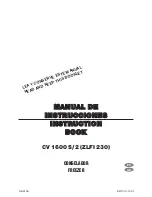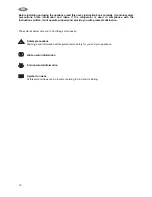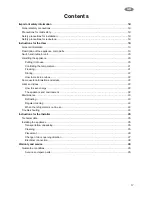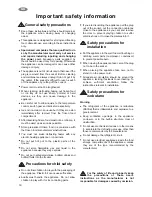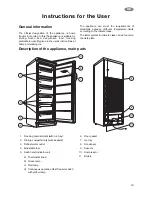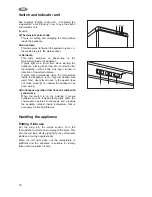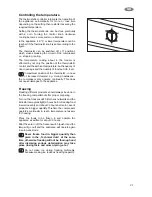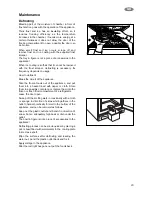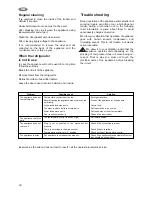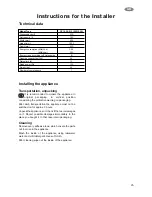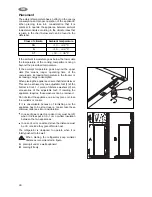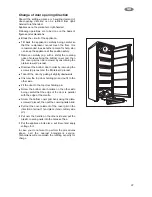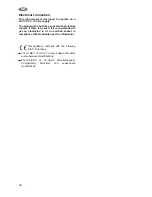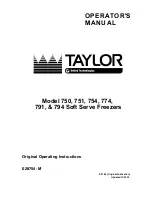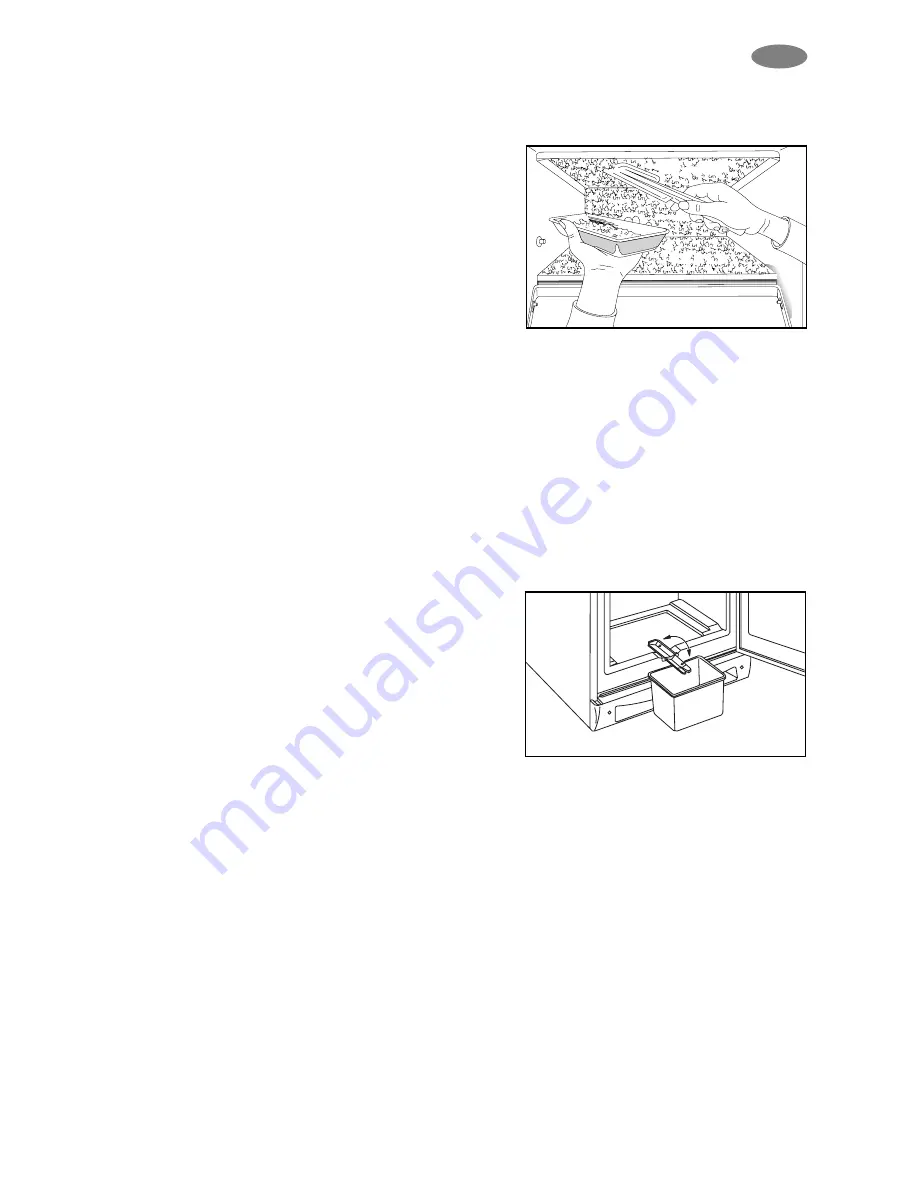
23
Maintenance
Defrosting
Bleeding part of the moisture of chamber in form of
frost and ice goes with the operation of the appliance.
Thick frost and ice has an insulating effect, so it
reduces freezing efficiency as the temperature
increases in the chamber, it needs more energy, at a
certain thickness it does not allow the door of the
freezing compartment to open, possibly the door can
be broken.
When small frost and ice occurs scrape off and
remove frost and ice coating with the supplied frost
scraper.
The tray in figure is not a piece of accessories to the
appliance!
When ice coating is so thick that it can not be removed
with the frost scraper, defrosting is necessary. Its
frequency depends on usage.
How to defrost it:
Break the circuit of the appliance.
Take the frozen foods out of the appliance, and put
them into a basket lined with paper or cloth. Store
them in a possibly cool place or replace them into the
frozen or fresh food compartment of a refrigerator.
Leave the door open.
Sweep off the melting water occasionally with a cloth
or sponge in direction of sides which gathers in the
outlet channel practically formed in the bottom of the
appliance and can be removed as follows:
Snap out the plastic outlet and bend it in direction of
arrow. Put an adequately high bowl or dish under the
outlet.
The bowl in figure is not a piece of accessories to the
appliance!
Defrosting process can be made quicker by placing a
pot or bowl filled with warm water to the cooling plate
formed as a shelf.
Wipe the surfaces after defrosting and leading the
water out, bend the plastic outlet back and fix it.
Apply voltage to the appliance.
After the red light has gone out put the foods back.
GB
Summary of Contents for CV 1600 S/2
Page 16: ...30 ...
Page 17: ...31 ...
Page 18: ...MENDEZ ALVARO 20 28045 MADRID Printed by Xerox Hungary Ltd 2002 01 24 ...

